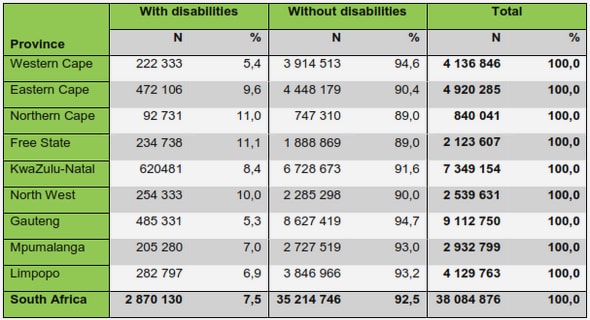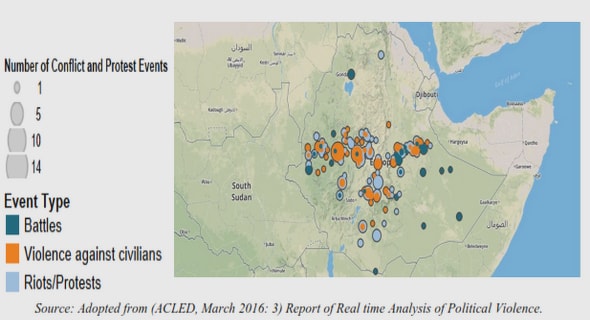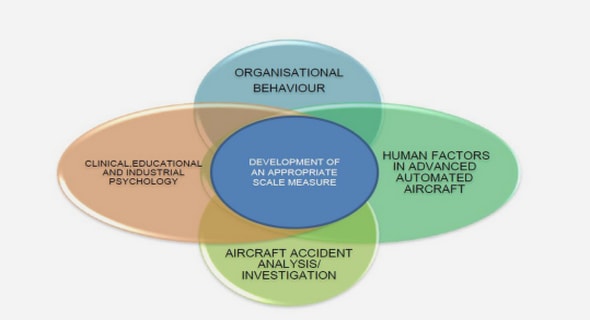Get Complete Project Material File(s) Now! »
External sources: current in space
The electrical currents in the magnetosphere and ionosphere ow in large part due to the interaction of the terrestrial magnetic eld with the solar wind and therefore depend on its properties. Solar wind pressure a ects the size of the magnetosphere and the strength of the magnetopause currents. The strength and orientation of the interplanetary magnetic eld (IMF) control the level of interconnection between the interplanetary medium and the terrestrial eld and can modify the structure of and circulation within the magnetosphere. For example, a southward direction of the interplanetary magnetic eld is critical to enabling reconnection with the dayside low-latitude magnetosphere, resulting in magnetic ux transfer to the magnetotail.
The magnetopause current system (Chapman-Ferraro current) limits the size of the mag-netosphere and creates a closed magnetosphere (at least for northward IMF). The tail current di ers from the magnetopause current because over part of its path it ows interior to the Earth’s magnetic eld. The region where this occurs is called the current sheet. The cross-tail current (related to the tail plasma sheet with closure via tail boundary current) is mainly produced by diamagnetic drift e ects due to a density gradient along the tail.
Ring current
A ring current is an electric current carried by charged particles trapped in Earth’s magne-tosphere. The behaviour of trapped particles can be approximated by the superposition of three types of motion: gyration around eld lines, « bounce » along eld lines, and azimuthal drift in rings around the Earth.
Gyration is produced by the Lorentz force, which makes charged particles move in circles around magnetic eld lines. Re ection of particles at the ends of eld lines is caused by the converging geometry of a dipole eld. As a gyrating charged particle approaches the Earth moving along a eld line, the particle encounters a magnetic mirror that re ects it. Azimuthal drift is produced by two e ects: a decrease in the strength of the main eld away from the Earth and a curvature of magnetic eld lines. Particles of opposite charge drift in opposite directions, i. e., protons gyrate in a left-handed sense and drift westward, while electrons gyrate in a right-handed sense and drift eastward. Since the particles drift in opposite directions, they produce an electric current in the same direction as the proton drift.
A collection of charged particles trapped in the Earth’s inner magnetic eld and drifting as described above constitutes a Van Allen radiation belt.
Field-aligned currents
A Birkeland current is a set of currents that ow along geomagnetic eld lines connecting the Earth’s magnetosphere to the Earth’s high latitude ionosphere. The Birkeland currents occur in two pairs of eld-aligned current sheets. The sheet on the high latitude side of the auroral zone is referred to as the Region 1 current sheet and the sheet on the low latitude side is referred to as the Region 2 current sheet. These two current sheets are caused by di erent physical mechanisms, but they are connected through the ionosphere and form a single circuit.
Reversals of magnetic eld
In 1906, geologist Bernard Brunhes rst noticed that some volcanic rocks (from the Central Massif of France) were magnetized opposite to the direction of the local Earth’s eld. In the 1920s, Motonori Matuyama dated these rocks with reversed elds to the early Pleistocene age or older. In the 1950s, techniques for radiometric dating were improved and Cox & Doell (1960) produced the rst magnetic polarity time scale. Later, Opdyke (1972) showed that the same pattern of reversals was recorded in sediments from deep-sea cores.
During the 1950s and 1960s, information of Earth’s magnetic changes was mainly collected by research vessels. The obtained data plotted on a map allowed to detect remarkably regular and continuous magnetic stripes on the ocean oor. Vine & Matthews (1963) and Morley & Larochelle (1964) independently provided a simple explanation by combining the sea oor spreading theory of (Hess, 1962) with the known time scale of reversals.
The explanation for these strips is that molten basalt emerges from the ridge and spreads away symmetrically in both directions. As the basalt cools, it captures the orientation of the dominant magnetic eld and carries it along on the spreading sea oor1. Basalt owing out of the ridge and cooling at later times captures the subsequent eld orientation. Thus the sea oor acts like a magnetic tape, capturing the alternating sequence of magnetic eld orientations. Past magnetic eld polarity can be inferred from data gathered from towing a magnetometer along the sea oor. (The age of any studied sea oor does not exceed 180 mln years.).
A similar technique was used to determine the virtual poles of the Earth from progres-sively older rocks. It revealed that the virtual poles wander over time. For many years it was thought that this « polar wandering » was a characteristic of the Earth’s magnetic eld. However it turned out that it evidences for continental drift. Not the magnetic poles have moved relative to the geographic poles, but the continents (Seyfert, 1987). The Morley-Vine-Matthews hypothesis was the rst key scienti c test of the sea oor spreading theory of continental drift. After it, the theory of plate tectonics was widely accepted.
Nowadays, it is considered proven that the Earth is changing the direction of its magnetic eld. Moreover, the correlation between the frequency of polarity reversal and the tectonic activity of the planet is proved. It was found that during reversal, the magnetic eld decreases signi cantly, but almost never vanishes. The value of the residual eld is uneven on the earth’s surface: it is noticeably higher in the regions of magnetic anomalies.
1Sea oor spreading is a process that occurs at mid-ocean ridges, where new oceanic crust is formed through volcanic activity and then gradually moves away from the ridge.
Geomagnetic storms
Geomagnetic storms are major magnetic disturbances occurring over several days, once or twice a month during the maximum solar cycle and several times a year during the solar minimum. They originate from the interaction between magnetosphere and coronal mass ejection (CME): large plasma bubble emitted by the sun. This has as a consequence to introduce a large number of ions into the external radiation belt and are observed from anywhere on Earth. During a storm, the intensity of the ring current increases substantially and causes perturbations of the magnetic eld on average of about 100 nT.
Magnetospheric substorms
Magnetospheric substorm is a brief auroral and magnetic disturbance that causes energy to be released from the magnetotail and injected into the high latitude ionosphere. Substorms take place over a period of a few hours and often only a few hours apart from each other. Visually they are seen as a sudden brightening and increased movement of auroral arcs.
A substorm is traditionally divided into three phases: the growth phase, the expansion phase, and the recovery phase.
The growth phase indicates a progressive equatorward movement of the auroral oval and magnetospheric recon guration until the sudden onset of substorm expansions (McPherron, 1970). However, the growth phase is not a necessary substorm phase unless substorm is preceded by recon guration. The growth phase is terminated by the auroral breakup | a sudden brightening and activation of the most equatorward arc in the northern and southern auroral ovals.
The expansion and recovery phases re ect the poleward advance and retreat of auroral disturbance in the polar regions. Akasofu (1964) divided the expansion phase into two stages: Akasofu initial brigtening (AIB) expanding in longitude, followed by poleward expansion (PE) a few minutes later. The westward traveling surge decays into drifting bands. As the surge travels westward, there is also an enhancement of the westward electrojet. On the Earth the magnetic eld suddenly decreases, sometimes up to a magnitude of 2 000 nT, which is about 3% of the total magnetic eld strength in this area. The substorm expansion phase lasts about 20 min, then the nal phase follows.
During the recovery phase, the brightness and strength of the aurora and currents de-creases and they gradually return to their original equatorward locations.
In earlier studies, the magnetospheric substorm was explained in terms of magnetic con-vection driven by magnetic reconnection. Magnetic reconnection is a physical process that may result from the development of some plasma instabilities. The Earth’s magnetic eld lines are merging with eld lines of southward IMF. The joined eld lines are swept back over the poles into the planetary magnetic tail. In the tail, the eld lines from the planet’s magnetic eld are re-joined and start moving toward night-side of the planet (Dungey, 1961). The rate of reconnection at the dayside magnetopause exceeds the rate of magnetotail recon-nection, which leads to the accumulation of energy in the magnetotail in the form of magnetic eld energy. This stage of energy storage ends with the development of a tearing instability.
However, presently, due to on-site observations in the near-Earth magnetotail, there are the two primary substorm onset scenarios based on the magnetospheric location of its occur-rence. Their common feature is the development of a thin current sheet in the magnetotail before the start of the expansion phase.
Electron contribution to the dispersion relation
Let’s focus on equations (3.45) and (3.46) for the electrons. We must perform an integration over the velocity space domain on which electrons are trapped. Notice rst that g(e) does not depend on the gyro-angle , the integral over simply gives a factor 2 . Second, instead of working with variables w? and wk, it is more convenient to use energy E and magnetic moment , which are invariant of motion. Thus, B dE d 2 w m k e w? dw? dwk = : (3.49).
Only electrons with E=(B0 + B1) < < E=B(‘) can reach the abscissa ‘ along the eld line and contribute to the charge/current density at that point. For example the integral (3.45) may be written more explicitly as Ae; = 8 Z ‘0 d‘ sin ‘ 1 dE e E=kBTe Z E=B(‘) d B(‘) g~(e)(‘) :(3.50).
Integrals over ‘ and can be switched but the integration domain should be changed accord-ingly. For a given , the electron travels only between the two mirror points, or equivalently, the time de ned by d‘ = vkd goes from 0 to b. Equation (3.50) may thus be rewritten as A = 8 Z0 1 1=2me2 Ve3‘0 e; Z min 0 + bdE e E=kBTe max d Z b d B( ) cos( cos(! )) g~(e)( ): (3.51) .
With the use of expansion (3.30), expressions (3.28) of g+(e) and (??) for B( ), the integration over the time variable and over the energy E can be performed analytically as it has already been done in Tur et al. 2014. We do not reproduce the details here. Introducing the dimensionless quantity x = b;max b = r E (B0 + B1) (3.52).
Ion contribution to the dispersion equation
Let us consider now the ion contribution. Expressions (3.34-3.35) for the perturbed distri-bution functions show that the natural variables are still w? and wk. First, we get rid of the gyro-angle variable by using the result Z 2 ei i sin d = 2 J0( i); (3.61).
then from (3.45-3.46), the integration over the parallel velocity is straightforward while the integration over the perpendicular velocity may be performed by using the classical formula 1 2 1 Z0 x J02 (xp 2a) e x dx = I0 (a) e a: (3.62).
Hence, referring to (3.36) for i, the ion contribution to charge and current densities may be written as V 2 i 2 with 1 2k2 Li2 2 2 2 ~2 Is = 2 Z0 I0 e k Li=B (l) sin2 l dl (3.64) B~2(l) Ai; = Is ’1; Ai;k = Ic 1; (3.63).
This expression generalizes the usual calculation performed in a straight and homogeneous magnetic eld geometry (Bellan, 2008). Here the calculation takes into account explicitly the non homogeneity of the magnetic eld. One important feature to note is that the ion contribution depends on the wavenumber k only and is therefore purely real.
Magnetotail dynamics
In the present section, we consider the observations made by the three inner THEMIS satel-lites (TH-A, TH-D and TH-E) orbiting in the near-Earth magnetotail. As already mentioned, their magnetic footprints are located in the immediate vicinity of the area where the rst auroral light is observed. The position of the three satellites is shown in Figure 4.6. They are located 1 RE from each other, around the central position: XGSM 10 RE, YGSM 1 RE and ZGSM 3 RE. The average magnetic eld seen by each satellite at 05:54:00, just before activation, is also presented. The measurement of a positive BxGSM shows that the central part of the current layer is probably located south of the satellites and, therefore, that the current layer is signi cantly south of the normal position of the magnetic equator. The magnetic eld is also strongly tilted in the Y direction, by almost 30 . Given this distortion, we can consider that TH-A and TH-E are approximately at the same magnetic longitude, TH-A closer to the earth than TH-E, and that TH-E and TH-D are on the same L-shell, TH-D being at west of TH-E.
Table of contents :
1 Introduction
2 Earth’s Magnetosphere
2.1 Steady magnetic eld
2.1.1 Internal sources: Geomagnetic dynamo
2.1.2 External sources: current in space
2.1.3 Ring current
2.1.4 Field-aligned currents3
2.2 Variation in magnetic eld
2.2.1 Reversals of magnetic eld
2.2.2 Geomagnetic storms
2.2.3 Magnetospheric substorms
2.2.4 Plasma instabilities
3 Electromagnetic drift instability
3.1 Theoretical formalism
3.1.1 Equilibrium state
3.1.2 Perturbed distribution functions
3.1.3 Charge density and parallel current perturbations
3.2 Electromagnetic drift wave dispersion relation
3.2.1 Electron contribution to the dispersion relation
3.2.2 Ion contribution to the dispersion equation
3.2.3 Dispersion relation for drift-Alfven waves
3.3 Results
4 Observational analysis
4.1 Auroral Development
4.2 Magnetotail dynamics
4.3 Comparison with the kinetic theory
4.4 Conclusion
5 Radiation environment during geomagnetic reversal
5.1 Cosmic rays
5.2 Geomagnetic dynamo model
5.3 Problem setup. Numerical model
5.4 Radiation in the near-Earth space and on the ground
5.5 Conclusion
6 Generalization of Stormer theory
6.1 Magnetic eld model
6.2 Stormer’s theory and its development for a quadrupole eld
6.3 Superposition of the dipole and quadrupole elds
6.4 Conclusions
7 Atmospheric escape during geomagnetic reversal
7.1 Dayside magnetopause and plasmapause sizes
7.1.1 Magnetopause
7.1.2 Magnetosphere and Plasmasphere
7.1.3 Plasmaspheric plumes and wind
7.2 Ion acceleration mechanisms
7.2.1 Polar wind
7.2.2 Auroral wind
7.2.3 Dipole-quadrupole magnetosphere
7.2.4 Ion pickup
7.3 Conclusion
8 Conclusion
Bibliography


